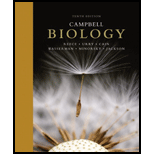
Concept explainers
Describe the process of gene expression, by which a gene affects the
To review: Gene expression affects the phenotype of an organism.
Concept introduction:
DNA is known as the blueprint of life as it controls gene expression. The genetic information of DNA is based on the nucleotide base sequences. These sequences are transcribed into mRNA triplets and are called codons. These mRNA triplet nucleotides are translated into polypeptide chains which code for specific proteins and enzymes. This is known as gene expression.
Explanation of Solution
DNA consists of genetic instructions in the form of gene sequences. It directs messenger RNA (mRNA) synthesis in the cell. During the formation of mRNA in a process which is known as transcription, each letter in the gene sequence is copied which codes for a particular amino acid. The polypeptide chain is synthesized on the basis of amino acid sequences in the reading frame. This process is known as translation. Specific proteins also known as functional gene products control the phenotypic traits in an individual such as eye color, hair color etc. These traits may also be controlled by cumulative action of many proteins.
Functional gene products are formed as a result of gene expression. There may be variation in the expression of the genes. Some genes are dominant over others which influence the appearance of the trait. For example, parents with blue eyes can have a child with brown eyes. This is because brown eye color trait is dominant over blue eye color.
Want to see more full solutions like this?
Chapter 17 Solutions
Campbell Biology (10th Edition)
Additional Science Textbook Solutions
Biological Science (6th Edition)
HUMAN ANATOMY
Campbell Essential Biology (7th Edition)
Physics of Everyday Phenomena
Genetics: From Genes to Genomes
- In one paragraph show how atoms and they're structure are related to the structure of dna and proteins. Talk about what atoms are. what they're made of, why chemical bonding is important to DNA?arrow_forwardWhat are the structure and properties of atoms and chemical bonds (especially how they relate to DNA and proteins).arrow_forwardThe Sentinel Cell: Nature’s Answer to Cancer?arrow_forward
- Molecular Biology Question You are working to characterize a novel protein in mice. Analysis shows that high levels of the primary transcript that codes for this protein are found in tissue from the brain, muscle, liver, and pancreas. However, an antibody that recognizes the C-terminal portion of the protein indicates that the protein is present in brain, muscle, and liver, but not in the pancreas. What is the most likely explanation for this result?arrow_forwardMolecular Biology Explain/discuss how “slow stop” and “quick/fast stop” mutants wereused to identify different protein involved in DNA replication in E. coli.arrow_forwardMolecular Biology Question A gene that codes for a protein was removed from a eukaryotic cell and inserted into a prokaryotic cell. Although the gene was successfully transcribed and translated, it produced a different protein than it produced in the eukaryotic cell. What is the most likely explanation?arrow_forward
- Molecular Biology LIST three characteristics of origins of replicationarrow_forwardMolecular Biology Question Please help. Thank you For E coli DNA polymerase III, give the structure and function of the b-clamp sub-complex. Describe how the structure of this sub-complex is important for it’s function.arrow_forwardMolecular Biology LIST three characteristics of DNA Polymerasesarrow_forward
 Concepts of BiologyBiologyISBN:9781938168116Author:Samantha Fowler, Rebecca Roush, James WisePublisher:OpenStax College
Concepts of BiologyBiologyISBN:9781938168116Author:Samantha Fowler, Rebecca Roush, James WisePublisher:OpenStax College Human Heredity: Principles and Issues (MindTap Co...BiologyISBN:9781305251052Author:Michael CummingsPublisher:Cengage Learning
Human Heredity: Principles and Issues (MindTap Co...BiologyISBN:9781305251052Author:Michael CummingsPublisher:Cengage Learning Biology Today and Tomorrow without Physiology (Mi...BiologyISBN:9781305117396Author:Cecie Starr, Christine Evers, Lisa StarrPublisher:Cengage Learning
Biology Today and Tomorrow without Physiology (Mi...BiologyISBN:9781305117396Author:Cecie Starr, Christine Evers, Lisa StarrPublisher:Cengage Learning Biology (MindTap Course List)BiologyISBN:9781337392938Author:Eldra Solomon, Charles Martin, Diana W. Martin, Linda R. BergPublisher:Cengage Learning
Biology (MindTap Course List)BiologyISBN:9781337392938Author:Eldra Solomon, Charles Martin, Diana W. Martin, Linda R. BergPublisher:Cengage Learning Human Biology (MindTap Course List)BiologyISBN:9781305112100Author:Cecie Starr, Beverly McMillanPublisher:Cengage Learning
Human Biology (MindTap Course List)BiologyISBN:9781305112100Author:Cecie Starr, Beverly McMillanPublisher:Cengage Learning





